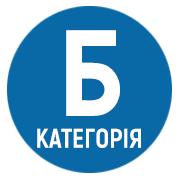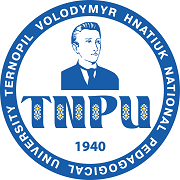СONTEMPORARY STATE OF TEACHING THE ENGLISH LANGUAGE TEACHER TRAINEES STRATEGIC COMPETENCE IN THE INTERACTION
Keywords:
strategic competence, interaction, communicative ability, the English language teacher traineesAbstract
In the article the international studies of strategic competence are considered. It deals with the analysis of state of the formation of strategic competence in general and the English interaction in particular. The concept of strategic competence, its notion and structure are described. The author identifies the components of communicative language ability in communicative language use and defines the components of communicative ability: assessment, planning, execution.
References
Alibali M. W. Gesture and the process of speech production: We think therefore we gesture / Alibali M. W., Kita S., Young A. // Language and Cognitive Processes. – 2000. – № 15. – P. 593–612.
Bachman L. Constructing measures and measuring constructs / L. Bachman, B. Harley, J. Cummins and others // The development of second language proficiency. – Cambridge : Cambridge University Press, 1990. – P. 84–107.
Bachman L. Fundamental сonsiderations in language testing / Lyle F. Bachman. – Oxford: Oxford University Press, 1990. – 408 р.
Bachman L. Language testing – SLA research / L. Bachman, A. Cohen // Interfaces between second language acquisition and language testing research. – Cambridge: Cambridge University Press, 1998. – 202 p.
Bachman L. Language testing in practice / L. Bachman, A. Palmer. – Oxford: Oxford University Press, 1996. – 377 p.
Canale M. Theoretical bases of communicative approaches to second-language teaching and testing / M. Canale, M. Swain // Applied Linguistics. – 1980. – № 1. – P. 1–47.
Cyr P. Les stratégies d´apprentissage / Paul Cyr. P.: CLE International, 1998. – 181 p.
Dictionnaire actuel de l’éducation / R. Legendre. – Monréal/P.: Guérin/Eska, 1993. – 1044 p.
Dictionnaire alphabétique et analogique de la langue française / Le Petit Robert / P. Rober. – P.: Société du Nouveau Littré, 1989. – 1952 p.
Duquette L. La créativité dans les pratiques communicatives / L. Duquette // Pédagogie de la communication dans l’enseignement d’une language étrangere. – Bruxelles: Boec, 1988. – P. 86–90.
Larsen-Freeman D. Second language acquisition research: staking out the territory / Larsen-Freeman D. TESOL Quarterly, 1991. – № 25/2. – P. 315-350 Cook V. Second language learning and language teaching / Cook V. – L.: Edward Arnold, 2001. – 262 p.
McCafferty S. Nonverbal Expressions and L2 Private Speech / S. McCafferty // Applied Linguistics. – 1998. – № 19. – P. 73–96.
McNeill D. Hand and Mind / D. McNeill. – Chicago: Chicago University Press, 1992. – 423 p.
Multidictionnaire des difficulties de la langue française / M.-É. De Viller. – Québec: Éditions Québec / Amérique, 1992. – 1568 p.
O’Malley J. M. Learning strategy applications with students of English as a foreign language / J. M. O’Malley, A. U. Chamot // TESOL Quarterly, 1985. – P. 557–584.
Oxford R. L. Language Learning Strategies: what every teacher should know / Oxford R. L. – Boston: Heinle&Heinle, 1990. – 341 p.
Skehan P. A Cognitive Approach to Language Learning / P. Skehan. – Oxford: Oxford University Press, 1998. – 324 p.
Stern H. H. Fundamental Concepts of Language Teaching / H. H. Stern. – Oxford: Oxford University Press, 1983. – 582 p.
Tardif J. Pour un enseignement stratégique: l’apport de la psychologie cognitive / J. Tardif. – Montréal: Éditions Logiques, 1992. – 474 p.
Wenden A. L. Learner strategies in language learning / Wenden A. L., Rubin J. – Cambridge: Cambridge University Press, 1987. – 181 p.






